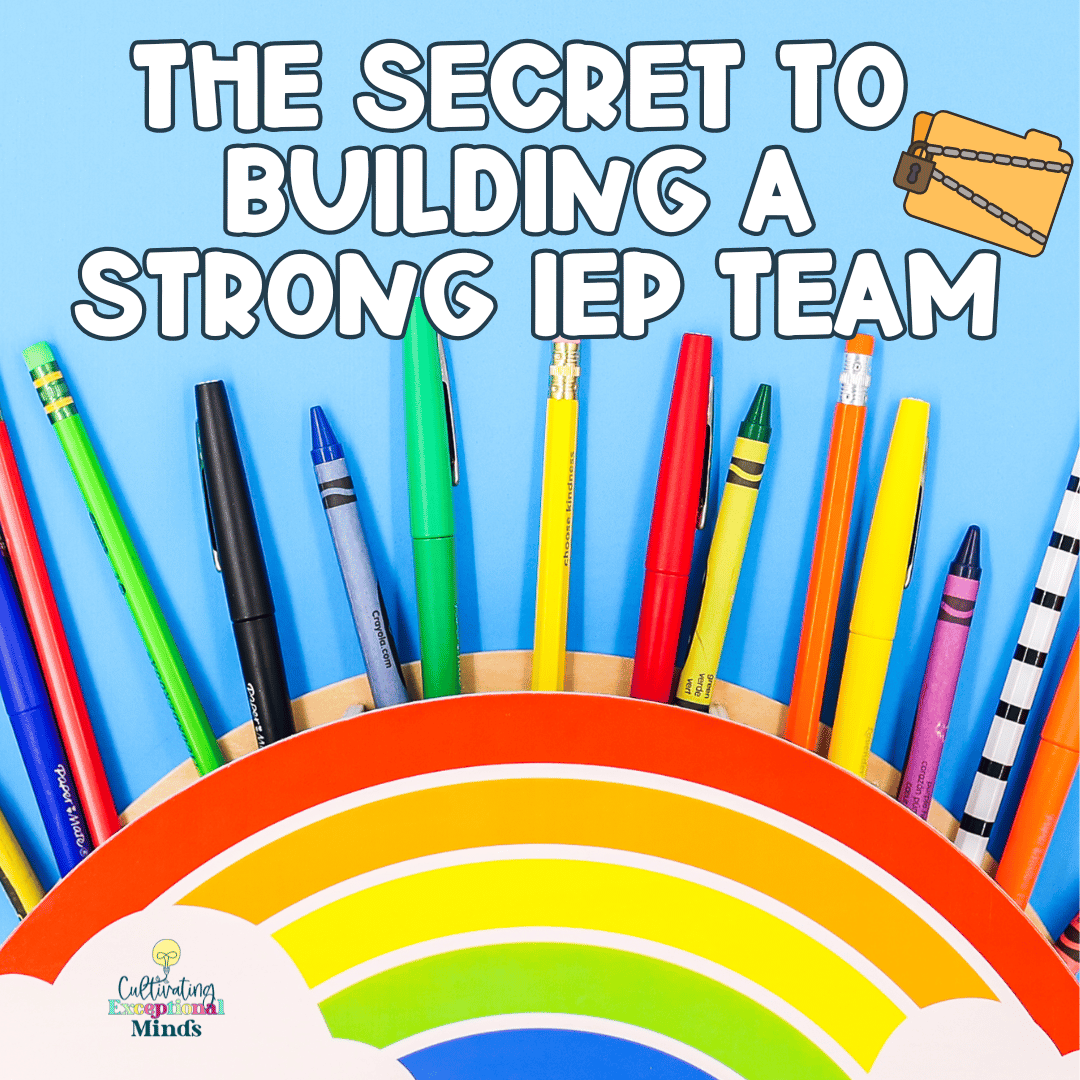Building an IEP shouldn’t feel like a solo mission, here’s how to build a collaborative IEP team.
Yet so many special educators find themselves stuck doing all the heavy lifting—prepping paperwork, setting goals, gathering data, and running the meeting like it’s a one-woman show. But here’s the truth: how to build a collaborative IEP team starts long before anyone sits down at the table.
✏️ The Secret to Building a Strong IEP Team
The strongest IEP teams are built with intention. They collaborate early, communicate clearly, and work together toward meaningful student progress. If that doesn’t sound like your current setup, don’t worry. You can shift your team dynamic without burning out in the process—and I’ll show you how.
Let’s walk through five simple strategies to strengthen your IEP team and turn those meetings into collaborative wins. Spoiler: tools like The Exceptional Collective, Input Surveys, and the Ultimate IEP Forms Bundle make this a whole lot easier.
Why Collaboration Matters
Let’s start here: IEPs are legal documents, but behind them are real students with real needs—and they benefit most when the adults around them function as a united front.
If you’ve ever wondered how to build a collaborative IEP team that actually works together, it begins with clear roles and early communication. When everyone brings something to the table—parents, paras, general education teachers, therapists—the IEP becomes more than a checklist. It becomes a roadmap tailored to a student’s unique strengths and challenges.
The result? Students thrive. And isn’t that the point?
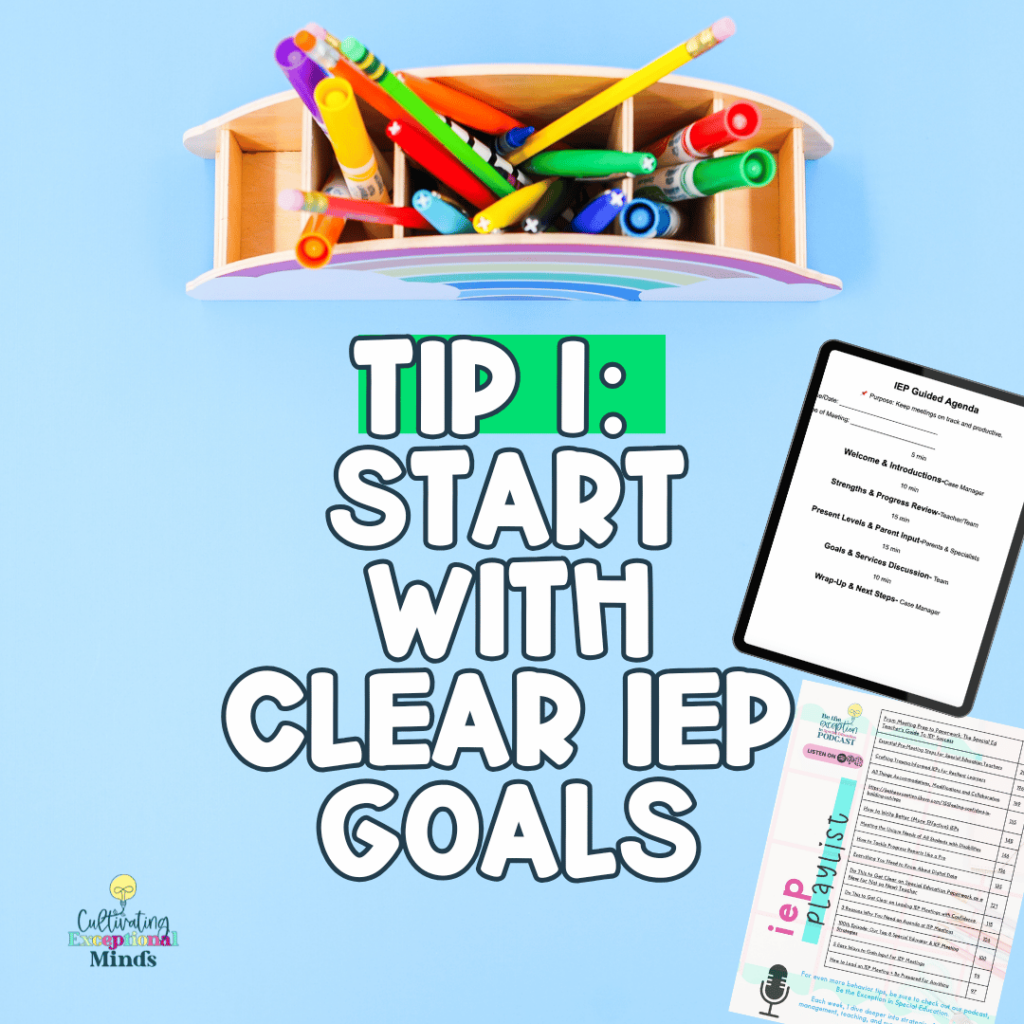
Tip 1: Start with Clear IEP Goals
Have you ever sat in an IEP meeting where nobody could agree on what the goal actually meant? Been there. That’s why I always say: clarity creates confidence.
Start with SMART, functional goals that everyone understands and can support. Better yet, use ready-to-go templates that take the guesswork out of writing. Inside The Exceptional Collective, you’ll find my IEP Goal-Setting Template Pack—designed for busy SPED teachers who want to streamline their process without sacrificing quality.
Using a goal bank that includes academic, behavioral, and functional skills gives your team a strong foundation. Everyone knows what you’re working toward and how success will be measured.
➡️ Bonus: These templates double as talking points for your next team meeting!
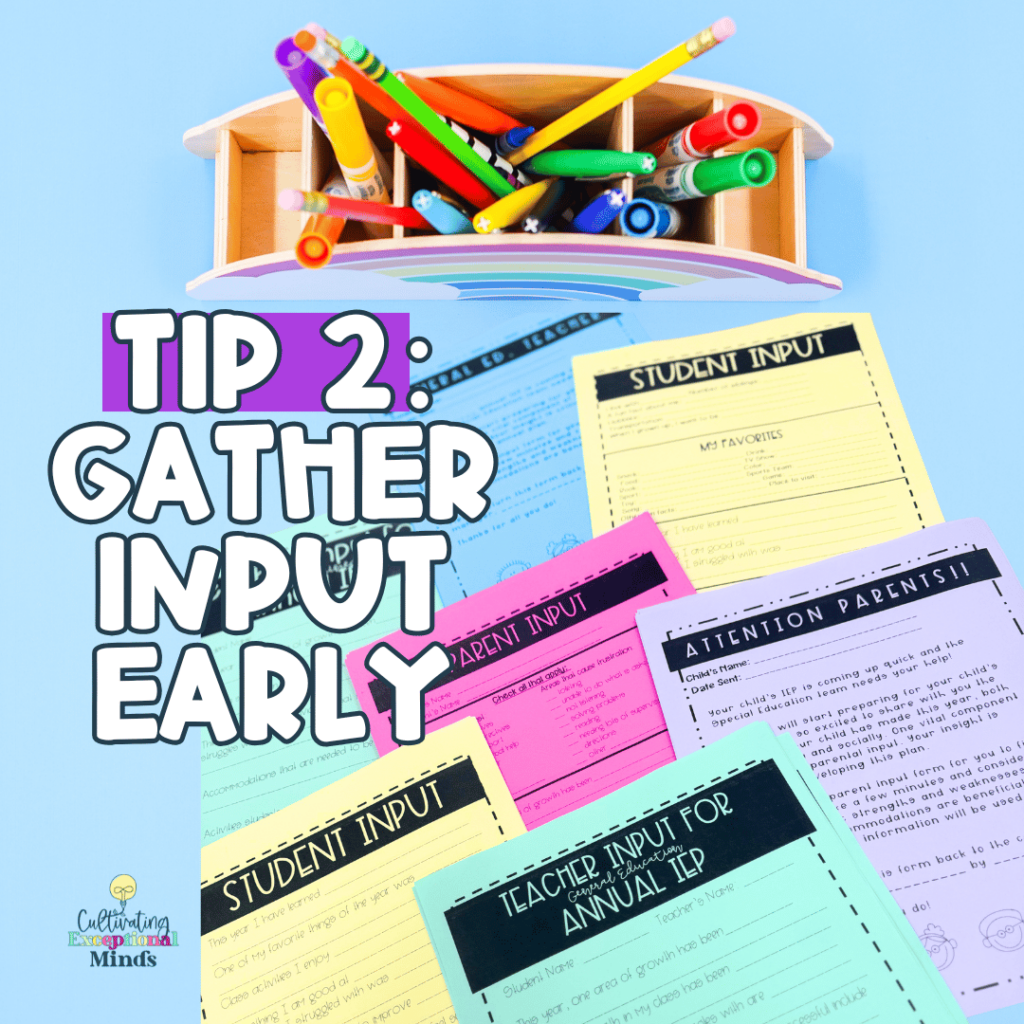
Tip 2: Gather Input Early
Nothing derails an IEP meeting faster than missing voices. If the speech therapist is surprised by the draft or a parent hasn’t shared concerns yet, things get messy—fast.
That’s why gathering input before the meeting is non-negotiable. And my go-to method? Input surveys.
These Parent and Teacher Input Forms have been a total game-changer—not just for me, but for hundreds of special educators. They’re easy to send, quick to complete, and keep all voices front and center.
Want every form you need, all in one place?
The Ultimate IEP Forms Bundle includes surveys, checklists, progress templates, and more. You’ll walk into the meeting with confidence and a complete paper trail.
➡️ No more scrambling for info the day before the meeting.
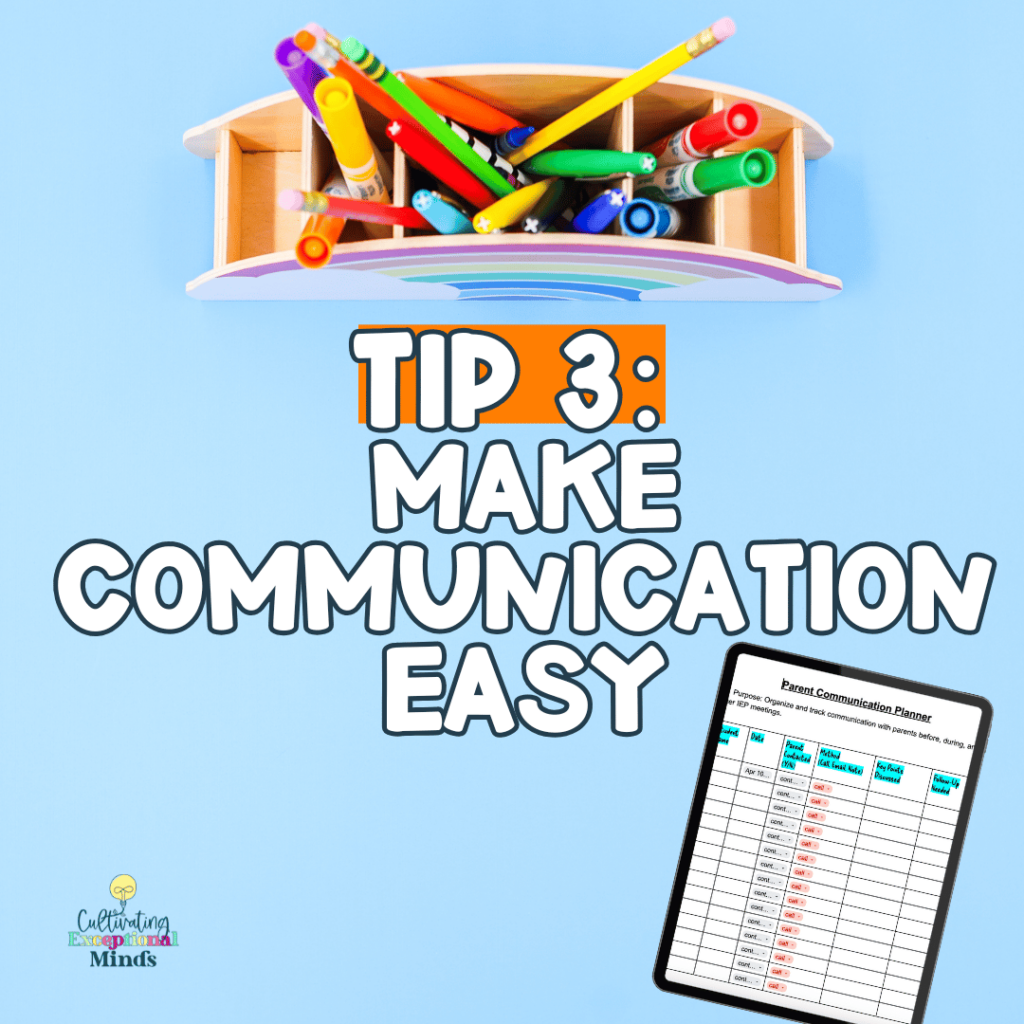
Tip 3: Make Communication Easy
Even the best intentions can fall apart if communication is clunky. Waiting on emails, missing updates, or having unclear expectations—it all slows down progress.
Instead, choose a system that works for your team and stick with it. That might be:
- A shared Google Doc with quick updates
- Weekly check-in texts or emails
- Scheduled collaboration times during planning periods
- Even voice memos if typing isn’t your thing (hello, multitasking!).
Consistency is key. When team members know when and how you’ll communicate, they’re more likely to stay engaged and respond.
Need a shortcut? Inside The Exceptional Collective, you’ll find collaboration templates designed to simplify communication across your entire IEP team.
Tip 4: Normalize Pre-Meetings
We often assume the IEP meeting is the place where everything should come together. But when you save all the conversations for that one hour, it becomes overwhelming—and honestly, inefficient.
Normalize quick pre-meetings with parents, therapists, or paras before the big day. Even a five-minute check-in can help:
- Clarify what the parent hopes to see
- Ensure therapists are aligned on services
- Make sure paras know their input is valued
This doesn’t have to be formal. A hallway chat or Zoom call works just fine. The goal is to walk into the meeting already aligned—not figuring it all out in real-time.
➡️ Pro tip: Use your input surveys as the agenda for these convos. It keeps things focused and productive.
Tip 5: Use Tools That Work for You
Here’s the truth: You don’t have to do this all on your own. There are tools built by special educators for special educators—and they’ll save your sanity.
Inside The Exceptional Collective, you’ll find:
- Ready-to-use goal-setting templates
- Collaboration checklists
- Parent input forms
- Digital planning tools
- Monthly trainings and office hours with real, supportive humans who get it
If you’re looking for how to build a collaborative IEP team, these resources will give you a running start—and the support to keep going strong.
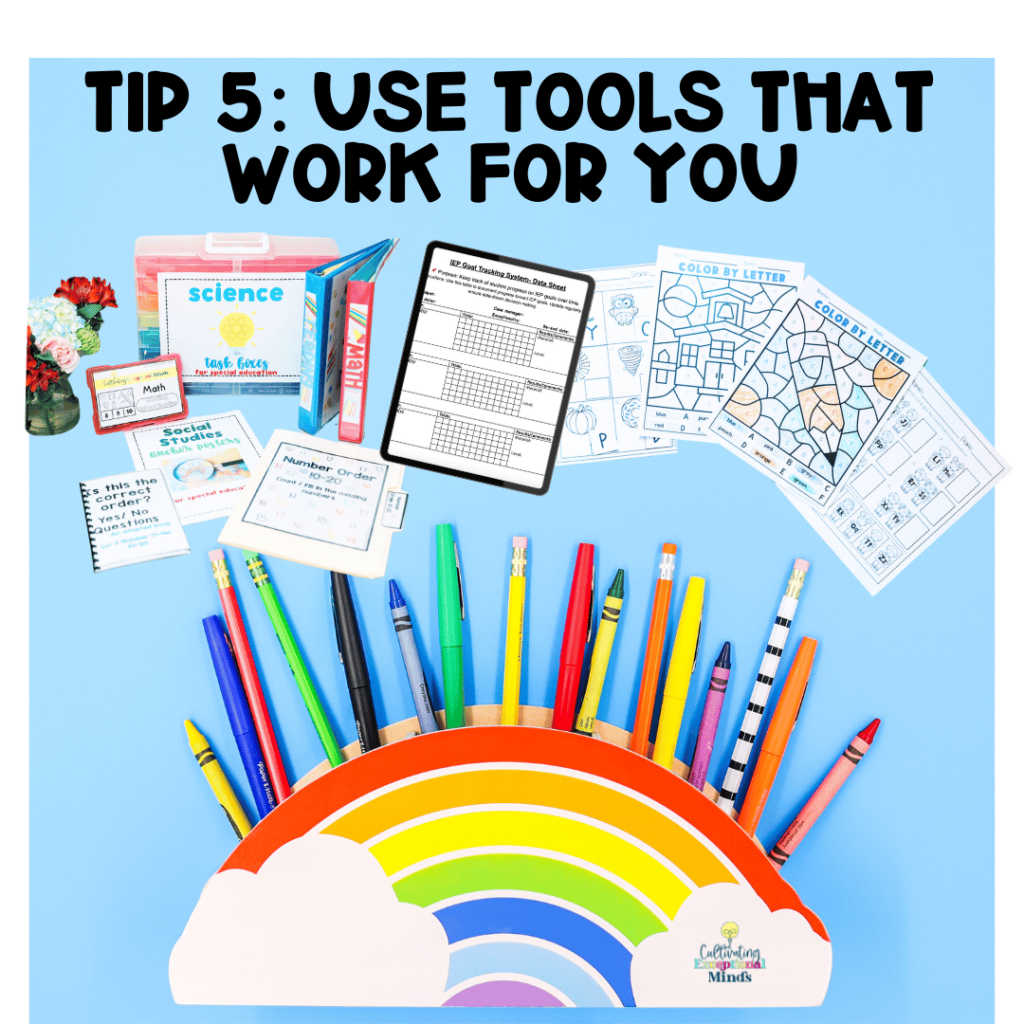
At the end of the day, strong IEP teams don’t happen by accident. They’re built through intentional systems, clear communication, and the right tools.
And the best part? You don’t have to reinvent the wheel.
➡️ Join The Exceptional Collective and get access to the collaboration guides, templates, and trainings that make team-building second nature.
Or grab the forms that started it all:
Because learning how to build a collaborative IEP team isn’t just a win for teachers—it’s a win for our students.





